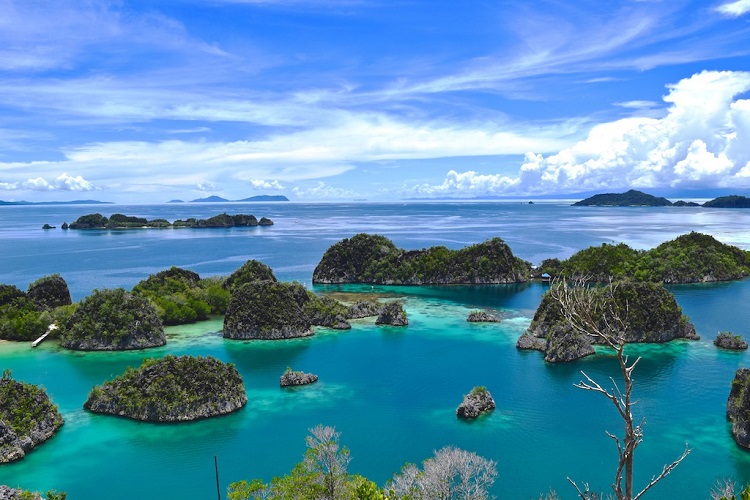Exploring the Wonders of Bali: A Comprehensive Guide
Introduction
Bali, the enchanting island in Indonesia, has long captivated the hearts and minds of travelers from around the world. Known for its stunning natural beauty, rich cultural heritage, and warm hospitality, Bali has become a premier destination for those seeking an unforgettable experience. From the iconic rice terraces and ancient temples to the vibrant beach towns and lush tropical forests, Bali offers a diverse array of attractions that cater to every type of traveler.In this comprehensive guide, we’ll delve into the wonders of Bali, exploring its geography, culture, cuisine, and the top destinations that make this island a true paradise. Whether you’re planning your first trip or revisiting this remarkable destination, this article will provide you with the essential information to make the most of your Bali adventure.
Geography and Climate
Bali, the smallest of the major islands that make up the Indonesian archipelago, is located in the westernmost end of the Lesser Sunda Islands. Situated just a few degrees south of the equator, Bali enjoys a tropical climate characterized by warm temperatures and high humidity throughout the year.The island is approximately 2,232 square miles (5,780 square kilometers) in size and is divided into eight regencies, each with its own unique charm and attractions. The central part of the island is dominated by the rugged Bali Ranges, a volcanic mountain range that includes the iconic Mount Agung, the highest point on the island at 10,308 feet (3,142 meters) above sea level.Bali’s coastline is diverse, featuring a mix of sandy beaches, rocky cliffs, and picturesque bays. The island’s northern and western coasts are generally more rugged, while the southern and eastern coasts are home to some of the most popular beach destinations, such as Kuta, Seminyak, and Sanur.
Seasons and Weather
Bali experiences a tropical monsoon climate, with two distinct seasons: the dry season (April to September) and the wet season (October to March). During the dry season, the weather is generally sunny and dry, with average temperatures ranging from 82°F (28°C) to 90°F (32°C). The wet season, on the other hand, brings more rainfall, with occasional thunderstorms and slightly cooler temperatures.It’s important to note that the weather can vary significantly across different regions of the island. The central and northern parts of Bali tend to be cooler and wetter, while the southern and eastern regions are generally drier and warmer.
Cultural Highlights
Bali’s rich cultural heritage is one of the main draws for visitors to the island. The predominant religion is Balinese Hinduism, a unique blend of Hindu, Buddhist, and animistic beliefs that have been deeply ingrained in the island’s way of life for centuries.
Temples and Shrines
Bali is home to thousands of temples and shrines, each with its own architectural style and cultural significance. Some of the most famous and iconic temples include:
- Tanah Lot: A stunning seaside temple perched atop a rocky outcrop, known for its dramatic sunset views.
- Uluwatu Temple: Situated on the edge of a steep cliff, this temple is renowned for its stunning ocean vistas and traditional Balinese dance performances.
- Tirta Empul: A sacred water temple where locals and visitors alike come to purify themselves in the holy springs.
- Pura Besakih: Often referred to as the “Mother Temple of Bali,” this massive temple complex is the largest and most important Hindu temple on the island.
Festivals and Ceremonies
Bali’s calendar is filled with a vibrant array of festivals and ceremonies that celebrate the island’s rich cultural heritage. Some of the most notable events include:
- Nyepi: The Balinese New Year celebration, marked by a day of silence, meditation, and introspection.
- Galungan: A 10-day festival that commemorates the victory of dharma (righteousness) over adharma (unrighteousness).
- Ogoh-Ogoh: An annual parade where giant, elaborately decorated effigies representing evil spirits are paraded through the streets and then burned.
- Omed-Omedan: Also known as the “Kissing Festival,” this unique tradition involves young couples kissing in public to bring good luck and prosperity.
Arts and Crafts
Bali is renowned for its vibrant and diverse arts and crafts traditions. From intricate wood carvings and delicate batik textiles to mesmerizing dance performances and captivating gamelan music, the island’s artistic heritage is a testament to the creativity and skill of its people.Some of the most notable Balinese art forms include:
- Painting: Balinese painting, characterized by its vivid colors and intricate details, can be found in various mediums, including canvas, wood, and even temple walls.
- Woodcarving: Balinese woodcarvers are renowned for their exquisite sculptures, ranging from intricate masks and statues to functional household items.
- Weaving: The island’s traditional weaving techniques, such as ikat and songket, produce stunning textiles that are highly sought after by collectors and fashion enthusiasts.
- Dance: Balinese dance forms, such as the graceful Legong and the dynamic Kecak, are deeply rooted in the island’s Hindu-Buddhist heritage and often performed in temple settings.
Top Destinations in Bali
Bali’s diverse landscape and rich cultural heritage offer a wide range of destinations for travelers to explore. Here are some of the island’s most popular and captivating spots:
Ubud
Nestled in the heart of Bali, Ubud is often referred to as the island’s cultural and artistic center. This charming town is renowned for its lush rice terraces, ancient temples, and vibrant art scene. Visitors can immerse themselves in the local culture by attending traditional dance performances, exploring art galleries and workshops, and hiking through the surrounding countryside.
Seminyak
Seminyak is a chic and cosmopolitan beach town on Bali’s southern coast. Known for its upscale resorts, trendy beach clubs, and high-end dining options, Seminyak attracts a sophisticated crowd of travelers. The town’s long stretch of golden sand and lively nightlife make it a popular destination for those seeking a luxurious and vibrant beach experience.
Canggu
Canggu, a coastal town located just north of Seminyak, has emerged as a hub for surfers, digital nomads, and wellness enthusiasts. This laid-back community boasts a thriving cafe culture, boutique shops, and some of Bali’s best surf breaks. Visitors can enjoy the town’s relaxed vibe, explore the nearby rice fields, and indulge in the island’s wellness offerings, such as yoga retreats and holistic spa treatments.
Tegalalang
The Tegalalang Rice Terraces, located just north of Ubud, are one of Bali’s most iconic and photogenic landscapes. These lush, stepped rice paddies, carved into the hillsides, offer a mesmerizing sight and a glimpse into the island’s agricultural heritage. Visitors can hike through the terraces, interact with local farmers, and enjoy the stunning vistas.
Uluwatu
Perched atop towering limestone cliffs on Bali’s southern tip, Uluwatu is home to one of the island’s most famous temples, the Uluwatu Temple. This dramatic setting, combined with world-class surf breaks and stunning sunsets, makes Uluwatu a must-visit destination for those seeking a mix of culture, adventure, and natural beauty.
Nusa Dua
Nusa Dua is a purpose-built resort area on Bali’s southern coast, known for its luxurious hotels, pristine beaches, and high-end amenities. This exclusive enclave caters to travelers seeking a relaxing, all-inclusive beach vacation, with easy access to water sports, golf courses, and upscale dining options.
Munduk
Nestled in the central highlands of Bali, Munduk is a charming mountain town that offers a refreshing respite from the island’s coastal areas. Surrounded by lush forests, cascading waterfalls, and scenic lakes, Munduk is a popular destination for those interested in hiking, nature photography, and experiencing the island’s cooler, more tranquil side.
Cuisine and Dining
Bali’s diverse culinary landscape is a reflection of its rich cultural heritage and the island’s abundant natural resources. From the iconic nasi goreng (fried rice) and sate (skewered meat) to the fragrant and flavorful curries, Balinese cuisine is a delightful blend of Indonesian, Chinese, and Indian influences.
Local Specialties
Some of the must-try Balinese dishes include:
- Babi Guling: A slow-roasted suckling pig, seasoned with a blend of spices and served with various accompaniments.
- Bebek Betutu: A slow-cooked, highly seasoned duck dish that is a specialty of the Ubud region.
- Lawar: A spicy salad made with a variety of chopped vegetables, meat, and a tangy dressing.
- Sate Lilit: Minced meat skewers that are shaped around lemongrass stalks and grilled to perfection.
- Nasi Campur: A mixed rice dish that features an assortment of meat, vegetables, and condiments.
Dining Experiences
Bali offers a diverse range of dining experiences, from casual street food stalls and local warungs (small family-owned restaurants) to high-end, award-winning establishments. Visitors can enjoy traditional Balinese cuisine in a serene, temple-like setting, indulge in fusion dishes with stunning ocean views, or explore the vibrant food markets for a true taste of local life.Many of Bali’s top restaurants also incorporate sustainable and organic practices, showcasing the island’s commitment to environmental preservation and supporting local producers.
Outdoor Adventures
Bali’s natural wonders offer a wealth of opportunities for outdoor enthusiasts. From hiking through lush tropical forests and scaling active volcanoes to exploring the island’s pristine beaches and diving into its vibrant marine life, there is no shortage of adventure to be had.
Hiking and Trekking
Bali’s diverse landscape provides ample opportunities for hiking and trekking. Some of the most popular trails include:
- Mount Batur: A challenging hike to the summit of this active volcano, offering stunning views of the surrounding caldera.
- Campuhan Ridge Walk: A scenic, relatively easy hike through the lush forests and rice terraces near Ubud.
- Munduk Waterfall Trek: A moderate hike that leads to a series of picturesque waterfalls in the island’s central highlands.
Water Activities
Bali’s coastline and surrounding waters offer a wide range of water-based activities, including:
- Surfing: The island is renowned for its world-class surf breaks, particularly in areas like Uluwatu, Canggu, and Keramas.
- Snorkeling and Diving: Bali’s crystal-clear waters and diverse marine life make it a premier destination for underwater exploration.
- Stand-Up Paddleboarding: Gliding across the calm waters of Bali’s lakes and rivers is a peaceful and scenic way to experience the island’s natural beauty.
Other Outdoor Pursuits
In addition to hiking and water sports, Bali offers a variety of other outdoor activities, such as:
- Cycling: Exploring the island’s rural roads and rice terraces by bicycle is a popular way to immerse oneself in the local landscape.
- Yoga and Meditation: Bali’s serene and spiritual atmosphere makes it an ideal destination for practicing yoga and meditation.
- Eco-Tourism: Visitors can participate in sustainable tourism initiatives, such as visiting organic farms or learning about traditional agricultural practices.
Accommodation and Transportation
Bali offers a wide range of accommodation options to suit every traveler’s budget and preferences, from luxurious resorts and boutique hotels to budget-friendly hostels and guesthouses.
Resorts and Hotels
Bali is renowned for its high-end, world-class resorts, particularly in destinations like Nusa Dua, Seminyak, and Ubud. These properties often feature stunning architecture, lush tropical gardens, and an array of amenities, such as infinity pools, spas, and gourmet dining options.For those seeking a more intimate and authentic experience, Bali also has a thriving boutique hotel scene, with properties that blend modern design with traditional Balinese elements.
Villas and Vacation Rentals
Bali’s popularity has also led to the rise of a robust vacation rental market, with many travelers opting for private villas or apartments. These accommodations offer more space, privacy, and the opportunity to experience the island like a local.
Budget Accommodations
At the other end of the spectrum, Bali has a wide range of budget-friendly options, including hostels, guesthouses, and small, family-run hotels. These accommodations provide a more immersive cultural experience and are often located in the heart of local communities.
Transportation
Getting around Bali can be done in a variety of ways, depending on your preferences and budget:
- Taxis and Ride-Hailing Apps: Taxis and ride-hailing services, such as Grab and Gojek, are widely available and convenient for shorter trips.
- Rental Vehicles: Renting a car, motorcycle, or scooter allows for more independence and the ability to explore the island at your own pace.
- Public Transportation: Bali has a network of buses and shuttle services that connect the major towns and tourist destinations, though they can be less reliable and comfortable than private transportation.
- Boat Transfers: For travel between the mainland and the nearby islands of Nusa Lembongan, Nusa Penida, and Nusa Ceningan, boat transfers are the primary mode of transportation.
Sustainability and Responsible Tourism
Bali has been at the forefront of sustainable tourism initiatives, with a growing emphasis on preserving the island’s natural resources and cultural heritage. Travelers can contribute to these efforts by adopting responsible practices during their visit.
Environmental Conservation
Bali has implemented various programs to address environmental challenges, such as waste management, water conservation, and the protection of natural habitats. Visitors can support these initiatives by:
- Reducing plastic waste by carrying reusable water bottles and bags
- Properly disposing of waste and recycling whenever possible
- Respecting the island’s natural resources, such as avoiding damaging coral reefs during snorkeling or diving
- Supporting eco-tourism initiatives and businesses that prioritize sustainability
Cultural Preservation
Bali’s rich cultural heritage is a fragile resource that requires careful stewardship. Travelers can contribute to the preservation of Balinese culture by:
- Respecting local customs and traditions, such as appropriate dress and behavior in sacred spaces
- Engaging with local artisans and supporting the island’s vibrant arts and crafts scene
- Participating in cultural exchange programs and learning about the Balinese way of life
- Avoiding activities that exploit or commodify local communities
By embracing sustainable and responsible tourism practices, travelers can help ensure that Bali’s natural beauty and cultural heritage are preserved for generations to come.
Conclusion
Bali, the enchanting “Island of the Gods,” is a destination that captivates the senses and nourishes the soul. From its stunning natural landscapes and rich cultural heritage to its vibrant culinary scene and endless opportunities for outdoor adventure, Bali offers a truly unique and unforgettable experience.Whether you’re seeking a relaxing beach vacation, a cultural immersion, or an adrenaline-fueled adventure, Bali has something to offer every type of traveler. By embracing the island’s sustainable and responsible tourism initiatives, you can contribute to the preservation of this remarkable destination and create lasting memories that will stay with you long after your journey has ended.So, pack your bags, open your heart, and let Bali’s magic sweep you away on an unforgettable journey of discovery.
FAQ
- Where is Bali located?
Bali is an island located in Indonesia, part of the Lesser Sunda Islands. It is situated just a few degrees south of the equator, in the westernmost end of the Indonesian archipelago. - What is the best time of year to visit Bali?
The best time to visit Bali is generally during the dry season, which runs from April to September. During this period, the weather is sunny and dry, making it ideal for outdoor activities and beach vacations. - What are the top attractions in Bali?
Some of the top attractions in Bali include the Tegalalang Rice Terraces, Uluwatu Temple, Tanah Lot Temple, the Campuhan Ridge Walk, and the beaches in areas like Seminyak, Canggu, and Nusa Dua. - What is the local currency in Bali?
The local currency in Bali is the Indonesian Rupiah (IDR). Major credit cards.



